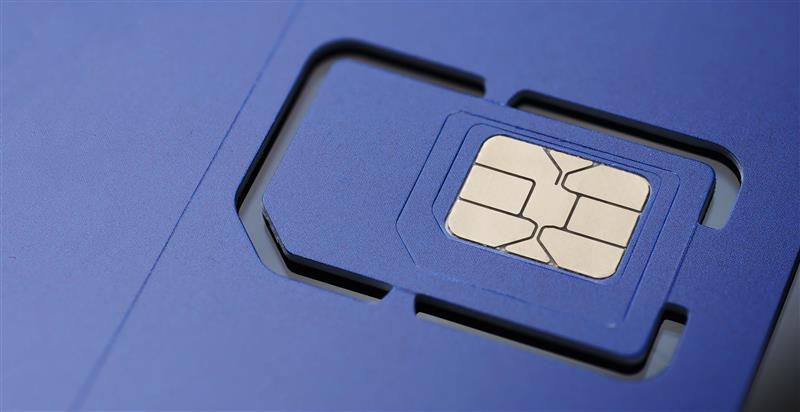US mobile network operator AT&T has become the latest big cellular brand to discontinue support for NB-IoT. It has been reported that the operator said it has begun the process of decommissioning its NB-IoT network and intends to fully shut the network down by the end of March 2025.
AT&T has already stopped selling NB-IoT data plans and certifying devices and said it will help its NB-IoT customers to transition to its alternative LTE-M IoT network.
What is the current state of NB-IoT?

AT&T launched its NB-IoT network in 2019, two years after the introduction of its LTE-M IoT network, claiming at the time that the move was a “big step towards massive IoT and 5G.” As of the end of June 2024, AT&T reported that it has around 117 million connected devices on its NB-IoT network.
NB-IoT, also known as Narrow Band IoT, has struggled to gain traction outside of China, where heavy subsidies have encouraged adoption by making NB-IoT devices almost free. Research firm Omdia reported that China accounts for nearly 90% of global NB-IoT connections.
Outside of China, NB-IoT has picked up limited operator support in Russia, India, and pockets of Eastern Europe, Southeast Asia, Saudi Arabia, and South Africa. This can be seen on the GSMA maintained deployment map for IoT technologies here.
As a result of poor international adoption, NB-IoT also has limited support for roaming.
Originally designed for largely static IoT use cases with low data transfer, NB-IoT also doesn’t offer much support for device mobility as devices only remain connected within a designated cell.
This reduces its usefulness for highly mobile applications such as wearables and can impact battery life if used in non-stationary applications – because a device has to reselect the cell if it moves, which increases the power draw.

From a technical perspective, NB-IoT is also not interoperable with other radio access technologies (RAT). This lack of compatibility implies that NB-IoT networks are isolated from other RATs, such as LTE or 5G, and cannot seamlessly share infrastructure or resources with them. Devices and systems relying on NB-IoT require dedicated network configurations, spectrum allocations, and specialized hardware, which can increase complexity and costs for operators and limit the ability to integrate with broader multi-RAT strategies. This siloed nature also restricts the flexibility to transition or upgrade seamlessly to other technologies in the future.
In terms of use case, low data rates and high latency exempts NB-IoT from any kind of rich media or time-sensitive applications. This also means NB-IoT devices are incapable of receiving instructions to change SIM profiles or update firmware.
Understanding why MNOs are discontinuing NB-IoT – making way for new bands

Perhaps one of the biggest criticisms of NB-IoT is that mobile operators adopting the technology had to set aside spectrum that could only be used for IoT.
LTE-M on the other hand was adapted from the LTE parent standard and shares much of LTE’s architecture and protocols. In terms of deployment, wherever LTE is present, LTE-M can be made available as a configuration option. The technology then operates within the existing LTE network infrastructure, enabling the same spectrum to be used for consumer smartphone connectivity.
And while NB-IoT devices need to be designed around specific frequencies with little support for roaming, device manufacturers or enterprises were frequently faced with a need to have multiple SKUs (Stock Keeping Units) – or versions of an IoT device that cater to different regional requirements – impacting costs and administrative overhead.
So, aside from poor uptake, one of the main reasons AT&T will discontinue NB-IoT network technology is to make way for 4G and 5G spectrum allocation.
For newer networks to come into play, old ones must go and MNOS worldwide are in the process of reallocating 2G and 3G spectrum for the likes of 4G and 5G. This will improve the overall quality and capacity of their networks.
Matt Hatton, of research house Transforma Insights, said the development was unsurprising: “There’s a general friction in the use of IoT-specific public networks. Coverage is patchy and roaming is largely awful. So, there’s a retrenching to the tried and trusted piggybacking on networks paid for by smartphone users (LTE mostly).”
AT&T is not the only big brand to discontinue support for NB-IoT. In 2020, Japan’s NTT Docomo announced that it was terminating its NB-IoT network after less than one year in service.
Although it has not made a public announcement, French operator Orange has also made some suggestions that its interest in NB-IoT is limited, and it believes other narrowband flavors can satisfy demand for IoT connectivity.
From a network operator perspective, as a low data throughput technology, NB-IoT resulted in super cheap data plans that did not justify the investment, especially without significant volume of device activation.
Is NB-IoT the right choice for IoT?

Although NB-IoT was born amid lots of hype as a standardized technology intended to specifically support cellular IoT deployments, its adoption has lagged behind expectation and allowed alternatives like LTE-M to be established as better options.
Public abandonment of the technology by leading operators such as AT&T and NTT Docomo have now driven additional nails into NB-IoT’s coffin.
When it comes to IoT deployments and the decision on which RAT to use, the best approach is to look at the problem you are trying to solve and the use case and avoid falling victim to the technology hype.
LTE 4G covers a wide variety of use cases for IoT and M2M but the devil is in the detail and when choosing a particular category of connectivity, it’s always best to start by looking at the application for guidance.
At Eseye we believe in future proofing IoT connectivity with an LTE-M and multi-RAT approach through AnyNet SMARTconnect global IoT connectivity software, which is installed directly into any device, enabling you to deploy the most appropriate RAT via a single SKU.
Unlock resilient and scalable connectivity with AnyNet SMARTconnect™
Eseye brings decades of end-to-end expertise to integrate and optimise IoT connectivity delivering near 100% uptime. From idea to implementation and beyond, we deliver lasting value from IoT. Nobody does IoT better.

